How to Read a Coin: A Guide to Understanding Coin Details and Grading
I’ve been chasing the thrill of coin collecting for over two decades, and every coin I hold feels like a portal to history. From the weight of a gold American Eagle in my hand to the faint luster of a...

I’ve been chasing the thrill of coin collecting for over two decades, and every coin I hold feels like a portal to history. From the weight of a gold American Eagle in my hand to the faint luster of a worn 19th-century large cent, each piece tells a story. The Sheldon grading scale, which is foundational to modern coin grading, was originally developed in the 1940s specifically for U.S. large cents, contributing to its widespread adoption. But to truly understand a coin—its value, its rarity, its condition—you need to know how to read it, including how to grade coins. This means decoding its obverse, reverse, and edge, grasping its specifications like karat and fineness, and mastering the art of grading. Whether you’re a beginner or a seasoned numismatist, this guide will walk you through the essentials for coin collectors, drawn from my own journey in the world of coins.
Introduction to Coin Collecting

Coin collecting, or numismatics, is more than a hobby—it’s a passion that blends history, art, and economics. I started as a kid, fishing Lincoln pennies from my dad’s change jar, and soon I was hooked on the diversity of United States coins and other coins, from United States classics to world coins like the Mexican Libertad. Numismatics invites you to explore coins of all kinds: circulating currency, commemorative issues, and precious metal bullion made of gold, silver, or platinum. These bullion coins are part of the broader category of precious metals, which are highly valued assets and a key component in many coin collections.
Understanding a coin’s value and condition is at the heart of collecting. Early on, I learned that two coins of the same type could differ wildly in worth based on their grade—a measure of their condition and rarity. The history of coin collecting stretches back to the 1850s, when enthusiasts began formalizing the hobby. The grading scale, specifically the Sheldon scale, introduced by William Sheldon in 1949, revolutionized how we evaluate coins, assigning a numerical grade from 1 to 70 to reflect quality. The Sheldon scale highlights the most common coin grades used by collectors and professional grading services like NGC and PCGS, helping standardize coin assessment and making it easier for consumers to understand coin quality. This system is still the gold standard today.
Today’s collectors have endless options: mint state coins fresh from the press, proof coins with mirror-like finishes, or uncirculated coins that have never seen a pocket. Coin shows are my favorite way to dive deeper—vibrant gatherings where collectors buy, sell, and trade while sharing knowledge about grading, authenticity, and values. Online communities and local clubs offer similar camaraderie. Whether you’re drawn to the shine of a silver Morgan dollar with above-average eye appeal or the heft of a gold Krugerrand, numismatics is a journey of discovery.
Coin Anatomy and Details

To read a coin, you need to know its anatomy and major features, including design elements: the coin’s edge, mint mark, legend, rim, relief, field, reverse, devices, obverse, and surface finishes. Each of these features plays a crucial role in coin identification, grading, and value assessment. Paying close attention to important details—such as the sharpness of lettering, clarity of mint marks, and the condition of design elements like hair lines or shield lines—is essential for accurate grading and evaluation. These elements are the building blocks of identification and evaluation. When I examine a coin, I feel like a detective, piecing together clues about its origin and story.
Obverse: The Face of the Coin
The obverse, or “heads,” is the front of the coin, often featuring a portrait or national symbol. On a U.S. Kennedy half dollar, it's John F. Kennedy's profile; on a Canadian Maple Leaf, it's Queen Elizabeth II. I always start here, as the obverse sets the coin's identity, while the coin's reverse holds additional significance. Look for:
-
Design: The central image, like Lady Liberty on the American Gold Eagle, reflects the issuing country's values.
-
Inscriptions: These include the denomination (e.g., “$1”), year of issue, and mottos like “E PLURIBUS UNUM.” The date is a quick clue to rarity—my 1909-S VDB Lincoln cent, for example, is prized for its low mintage.
-
Mint Mark: A small letter (e.g., “P” for Philadelphia, “S” for San Francisco) shows where the coin was minted. I once spotted a 1922-D Lincoln cent in a dealer's case, a key date that jumped in value because of its mint mark.
Reverse: The Backstory
The reverse, or “tails,” is the back, often showcasing intricate designs. The American Silver Eagle's heraldic eagle or the Australian Kookaburra's rotating wildlife designs are stunning examples. The reverse is where I lose myself in a coin's artistry, sometimes noting any minor wear in the design. Check for:
-
Design: This might commemorate an event (e.g., the 1986 Statue of Liberty commemorative) or feature a national icon, like the springbok on a South African Krugerrand.
-
Inscriptions: These often list specifications, like “1 OZ FINE GOLD” on a Gold Buffalo, or the country of origin. For bullion, these details confirm purity and weight.
-
Designer's Initials: Tiny letters near the design credit the artist. I once traced a rare 1916 Standing Liberty quarter to its designer, Hermon MacNeil, which added to its allure.
Edge: The Overlooked Detail
The edge is the coin's outer rim, and it's easy to miss—but it can make or break a coin's value. I learned this when I found a 1965 Kennedy half dollar with a smooth edge, a rare error that set it apart from its reeded counterparts, revealing only minuscule imperfections. Examine the edge for:
-
Reeding: Grooved edges, like on a U.S. quarter, were historically used to prevent tampering. Today, they're often decorative.
-
Plain Edge: Smooth edges appear on some older coins or errors. My 1937 Buffalo nickel with a plain edge turned out to be a minting mistake worth hundreds.
-
Lettered Edge: Coins like the U.S. Presidential dollars have inscriptions like “IN GOD WE TRUST” on the edge. Tilt the coin under light to read them.
-
Security Features: Modern bullion coins, like the Austrian Philharmonic, may have unique edge patterns to deter counterfeits.
Mint Mark and Other Details
The mint mark is a tiny but critical detail, often found on the obverse or reverse. Coins from mints like West Point (“W”) or San Francisco (“S”) can carry a premium due to lower production. I also look for visible details like “full bands” on a Mercury dime (sharp horizontal lines on the reverse fasces), which indicate a strong strike, or “weak strike” areas where the design is faint. Contact marks—small dings from handling—can lower a coin's grade, so I use a 10x magnifying loupe to spot them. A good light source and a steady hand are your best tools here.
Understanding Coin Grading

Grading is the art and science of assessing a coin's condition, and it's a skill that transformed my collecting. A coin's assigned grade determines its value, often by thousands of dollars. The Sheldon scale, ranging from 1 (heavily worn) to 70 (perfect), is the backbone of grading. Collectors and professionals grade coins to establish a standardized valuation and classification system based on condition. For example, a Morgan dollar graded MS-65 (mint state, gem quality) might fetch $200, while the same coin in VF-20 (very fine, worn) could be worth $30.
Professional grading services like PCGS (Professional Coin Grading Service) and NGC (Numismatic Guaranty Corporation) combine numerical grades with a basic coin grading guide, grading standards and terms like:
-
Extremely Fine (EF or XF): Light wear on the coin's highest points, details sharp.
-
Gem Uncirculated (MS-65): No wear, strong luster, minor marks.
-
Brilliant Uncirculated (BU): A non-technical term for shiny, uncirculated coins.
When comparing coins within a grade, some may be considered a higher grade within their assigned category, showing superior quality and eye appeal that approaches the next grading tier.
When I started, I graded coins myself, but I soon realized the value of third-party grading. PCGS slabs (sealed plastic holders) give me confidence in a coin's authenticity and grade. However, grading isn't just about numbers—it's about understanding wear, eye appeal, and strike quality, including coins with very few contact marks . For instance, a coin with “bag marks” (scratches from mint bags) or dipped copper might grade lower despite being uncirculated. After evaluating wear and luster, close inspection is crucial to distinguish subtle differences in mint luster, wear, and contact marks, especially among coins with minimal wear.
Some features can be identified with the naked eye, while others require magnification for accurate assessment.
Pitfalls like improper storage can hurt a coin's grade. I once bought a silver dollar that had been stored in a PVC holder, leaving a green residue that slashed its value. Artificial re-toning (chemically altering a coin's color) or excessive toning (natural discoloration) can also lower grades. Learning these nuances, including the importance of noticeable contact marks and moderate marks, took time, but it's made me a sharper collector. Special classifications, such as a proof coin, refer to high-quality, meticulously struck coins with mirror-like surfaces and exceptional detail, often graded with premium standards.
How to Grade Coins
Grading coins is one of the most rewarding—and sometimes challenging—aspects of coin collecting. When I first started, I quickly realized that being able to accurately grade coins could mean the difference between finding a hidden gem and overpaying for a common piece. The process of coin grading is all about evaluating a coin’s condition using a standardized grading scale, and it’s a skill that every collector should strive to master.
The most widely used system is the Sheldon grading scale, which assigns a numeric value from 1 (barely identifiable) to 70 (a perfect coin with no flaws). This coin grading scale is the backbone of the hobby, providing a universal language for collectors and dealers alike. Whether you’re handling circulated coins or uncirculated coins, understanding where a coin falls on this scale is crucial for determining its value and desirability.
When I grade coins, I focus on three main factors: the coin’s surface, its luster, and the quality of its strike. The surface should be free from major marks or scratches, especially on the highest points of the design. Luster—the way light reflects off the coin—can reveal whether a coin still has its original mint luster or if it’s been dulled by circulation wear. A strong, even strike means the coin’s details are sharp and well-defined, while a weak strike can make even a high-grade coin look less impressive.
Here’s my step-by-step approach to grading coins:
-
Examine the Coin’s Surface: Look for contact marks, scuffs, or signs of cleaning. Use a magnifying glass to spot minor details that might affect the grade.
-
Assess the Luster: Tilt the coin under a good light source. Uncirculated coins should display vibrant, original luster, while circulated coins often appear dull or muted.
-
Evaluate the Strike: Check how well the major design elements and finer details are rendered. A well-struck coin will have crisp, clear features.
-
Compare to Grading Standards: Reference images and descriptions from trusted coin grading guides or the official Sheldon grading scale to match your coin’s condition to the correct numeric value.
-
Practice and Patience: The more coins you grade, the sharper your eye becomes. I always recommend comparing your assessments with those of fellow collectors or professional numismatists to improve your accuracy.
Learning how to grade coins takes time, but it’s a skill that pays off in every aspect of coin collecting. By understanding the grading scale and what makes a perfect coin, you’ll be better equipped to spot quality coins, negotiate confidently, and build a collection you can be proud of.
Factors Affecting Coin Values

A coin's numeric value and value hinges on more than its grade. Rarity, condition, demand, and metal content all play a role. A coin's value is also influenced by its features, grade, and condition, including aspects like the coin's relief, which can affect its appearance and desirability among collectors. Here's what I've learned about what drives a coin's worth, and why rarity is an important factor:
-
Rarity: To determine the value of commemorative coins, rarity plays a vital role—low-mintage coins, like the 1916-D Mercury dime, are prized. I once tracked down a 1932-D Washington quarter, one of the rarest in the series, and its scarcity drove its price to $500 in fine condition.
-
Condition: Higher grades mean higher values. A mint state 1889-CC Morgan dollar can sell for $100,000, while a worn example might fetch $500.
-
Demand: Market trends matter. World War II-era coins, like the 1943 steel cent, are hot due to their historical appeal. I've seen collectors pay premiums for these at shows.
-
Metal Content: For bullion coins, value tracks the spot price of gold or silver. A 1 oz Gold Eagle, with 1 troy ounce of 22-karat (.9167 fine) gold, fluctuates with the market, often exceeding $2,000 in 2025.
-
Eye Appeal and Strike: A well-struck coin with vibrant luster or attractive toning (natural patina) can command a premium. I once sold a rainbow-toned Morgan dollar for double its book value because of its stunning colors.
A prominent flaw, such as a planchet defect, environmental damage, or other significant surface imperfection, can significantly reduce a coin's value. Flaws hurt value. Minor softness (weakly struck details), environmental damage (corrosion), or a prominent scratch—meaning a noticeable and significant surface imperfection—can tank a coin's worth. Conversely, exceptional eye appeal—like a sharply struck 1969-S Kennedy half dollar—can boost it. Staying informed about market trends, including average strike quality via resources like Coin World or auction results, helps me spot undervalued coins.
Identifying Counterfeit Coins

Counterfeit coins are an unfortunate reality in coin collecting, and even experienced coin collectors can be fooled by a convincing fake. Over the years, I've seen everything from crude cast copies to expertly crafted counterfeits that could easily pass for the real thing at first glance. Spotting these imposters is essential—not just to protect your investment, but to preserve the integrity of your collection and the hobby as a whole.
The first step in identifying counterfeit coins is to know what genuine coins should look and feel like. I always start by comparing a suspect coin to a known authentic example, paying close attention to weight, diameter, and thickness. Many counterfeits are made from base metals and will feel lighter or heavier than they should. A digital scale and caliper are invaluable tools for this reason.
Next, examine the coin's design elements under a magnifying glass. Genuine coins have sharp, well-defined details, while counterfeits often show signs of weak strike, blurry lettering, or uneven surfaces. The edge can also be a giveaway—look for inconsistent reeding, seams, or evidence of casting. I once caught a fake Morgan dollar because the edge reeding was uneven and the surface had tiny pits, a telltale sign of a cast coin.
Sound is another clue. Some collectors use the “ping test” for silver coins: a genuine silver coin will produce a clear, ringing tone when gently tapped, while a counterfeit made from base metals will sound dull. However, this method isn't foolproof and should be used with caution.
When in doubt, I turn to professional grading services like PCGS or NGC. These experts have the experience and equipment to authenticate coins and assign a reliable grade, which can make a huge difference in a graded coin's value. Buying coins already certified in a PCGS holder or similar slab adds an extra layer of security.
To avoid counterfeits, I recommend buying from reputable dealers, especially those who are members of recognized numismatic organizations. At coin shows, I always ask about a dealer's return policy and look for references or reviews. Online, stick to established auction houses or marketplaces with buyer protection.
Ultimately, the best defense against counterfeit coins is education and vigilance. The more you handle genuine coins and learn about their characteristics, the easier it becomes to spot a fake. Trust your instincts—if a deal seems too good to be true, it probably is. By staying informed and cautious, collectors can protect both their very few coin collections and the value of their coins.
Advanced Coin Evaluation
For serious collectors, evaluation goes beyond the basics. Advanced techniques involve dissecting a coin's strike quality, luster, and surface condition. I use a 10x loupe and a halogen lamp to inspect details, which can be missed by an untrained eye, like:
-
Strike Quality: A strong strike shows crisp details, like full feathers on an eagle. Weak strikes, often from worn dies, look mushy.
-
Luster: Mint state coins should glow with original mint luster, a frosty or satiny sheen. Dipped coins (chemically cleaned) lose this, hurting value.
-
Surface Condition: Look for minuscule imperfections, like hairline scratches, or an applied substance, such as wax or lacquer, that may mask flaws.
Understanding the minting process deepens your evaluation. Metal movement (how molten metal fills a die) affects strike quality, while die wear can cause weak details. I once identified a 1955 doubled-die Lincoln cent by its distinct doubled lettering, a result of a misaligned die. Tools like coin albums help me organize and compare coins minted, while a digital scale confirms weights (e.g., 31.1035 grams for a 1 oz troy coin).
Flaws to watch for include prominent flaws (large scratches) or artificial enhancements (polished surfaces). By studying minting errors and varieties, like the 1972 Type 2 Eisenhower dollar, I've snagged undervalued coins at auctions, including sp specimen example. Practice and patience are key—every coin you evaluate sharpens your eye.
Storing and Preserving Raw Coins

Preserving coins is as important as evaluating them. Improper storage can ruin a collection, as I learned when a silver Morgan dollar developed black spots from a damp storage box. Proper storage maintains condition and value, especially for perfect uncirculated specimens, and I've adopted these best practices:
-
Coin Albums and Holders: Use archival-quality albums, 2x2 cardboard holders, or plastic slabs to protect coins from scratches and corrosion. I prefer Dansco albums for their durability.
-
Non-PVC Materials: PVC holders can release chemicals that damage coins. I switched to Mylar or polyethylene holders years ago.
-
Handling: Always wear cotton gloves to avoid oil and dirt from fingers. I hold coins by the edge, never touching the obverse or reverse.
-
Environment: Store coins in a cool, dry place to prevent excessive toning or environmental damage. A safe deposit box or a home safe with silica gel packets works well.
Risks like artificial re-toning (chemically induced color) or excessive toning from humidity can devalue coins. I check my collection regularly for signs of deterioration, like tarnish on silver. By investing in quality storage and handling with care, I've kept my coins pristine, preserving their value for years. Of course, graded and sonically sealed (slabbed) coins from NGC, PCGS, or CAC are virtually immune to any of the concerns raw coins present.
Key Specifications: Karat, Fineness, and Troy Ounces
For bullion coins, specifications are critical. These details, often inscribed on the reverse, confirm a coin's metal content and authenticity:
-
Karat: Gold purity on a 24-part scale. A 24-karat coin (e.g., Canadian Maple Leaf) is 99.99% pure, while 22-karat (e.g., American Gold Eagle) is 91.67% gold, alloyed for strength. I prefer 24-karat for purity but admire the warm hue of 22-karat coins.
-
Fineness: Purity as a decimal (e.g., .9999 for 99.99% pure gold). The Australian Kangaroo boasts .9999 fineness, a hallmark of quality.
-
Troy Ounces: Bullion is measured in troy ounces (31.1035 grams). A 1 oz Silver Eagle contains 1 troy ounce of .999 fine silver. Silver Maple Leafs are another well-known example of .9999 fine silver bullion coins. I use a digital scale to verify weights.
-
Diameter and Thickness: These help identify coins. A 1 oz Gold Maple Leaf is 30 mm wide and 2.8 mm thick. A caliper ensures accuracy.
-
Denomination: Symbolic for bullion, like $50 on a Gold Eagle. The metal's market value dwarfs the face value.
Related Articles
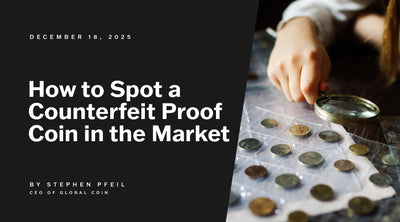
How to Spot a Counterfeit Proof Coin in the Market
How to Spot a Counterfeit Proof Coin in the Market In the world of numismatics, few things hold ...
Discover More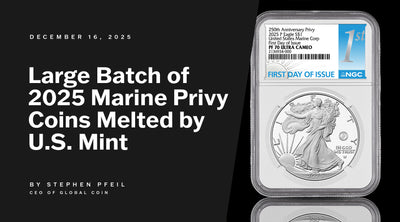
BREAKING NUMISMATIC NEWS: Large batch of 2025 Marine Privy Coins MELTED by U.S. Mint
BREAKING NUMISMATIC NEWS: Large batch of 2025 Marine Privy Coins MELTED by U.S. Mint A historic ...
Discover More
Tax Implications When You Sell Gold Bullion in Different States
Disclaimer: The following content is for informational purposes only and should not be construed ...
Discover More

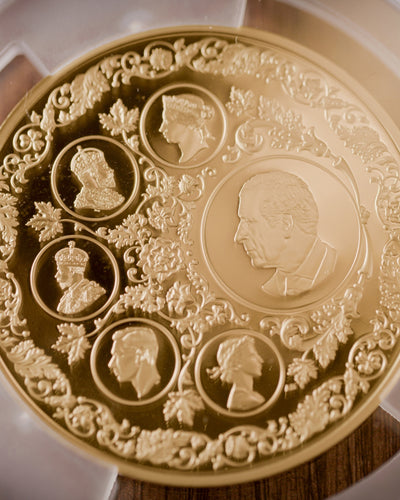
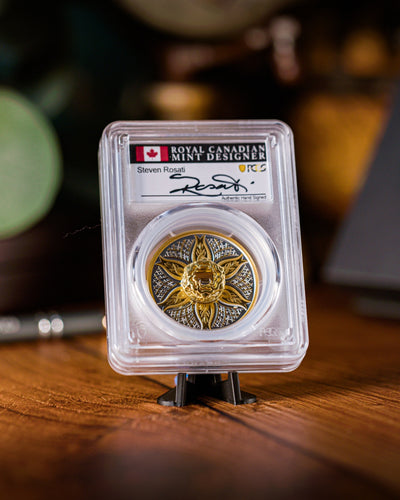
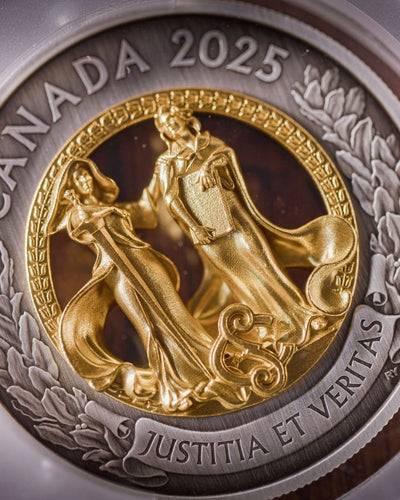
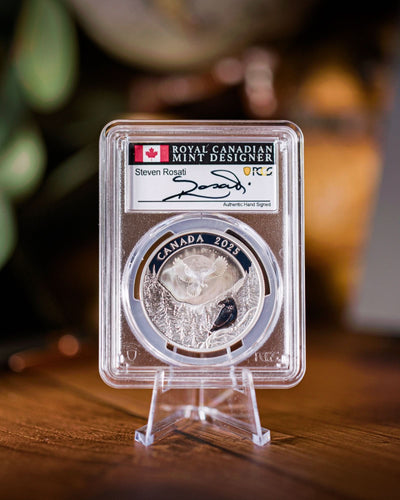
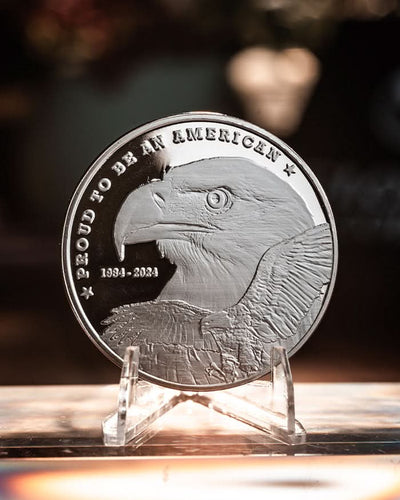
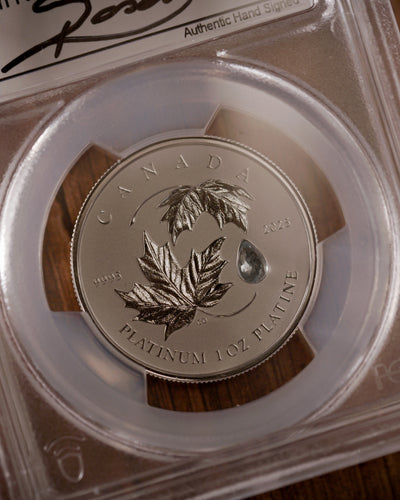
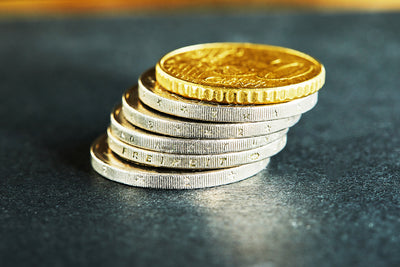
Leave a comment
This site is protected by hCaptcha and the hCaptcha Privacy Policy and Terms of Service apply.